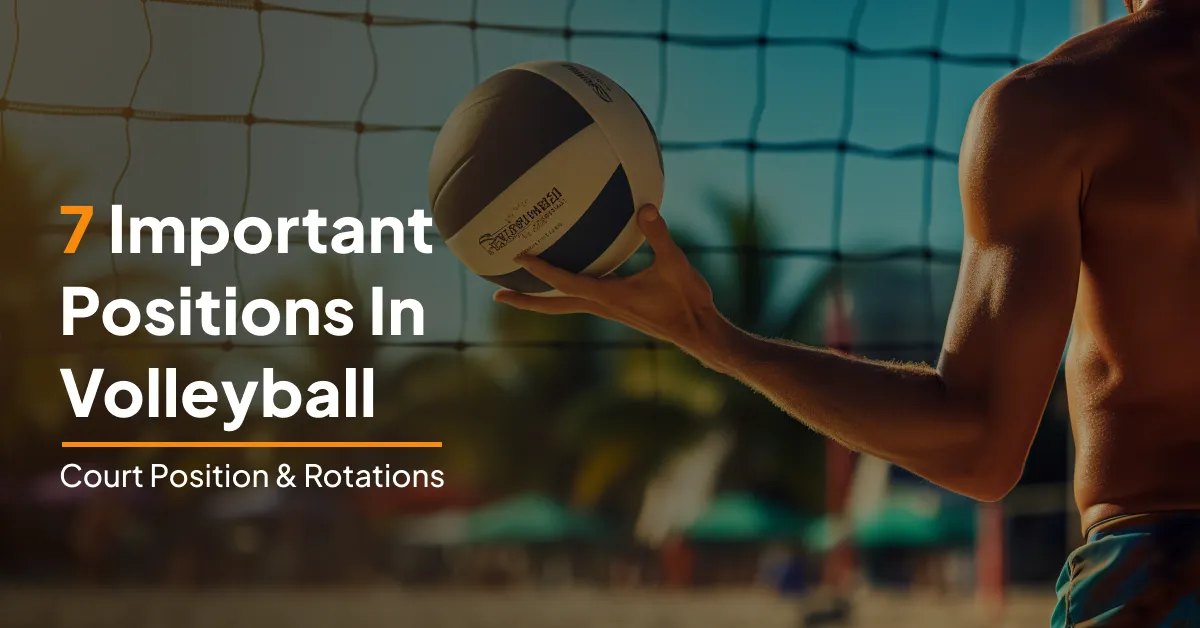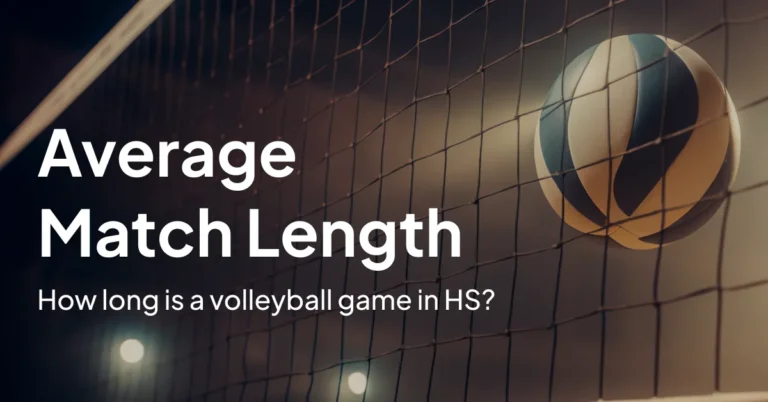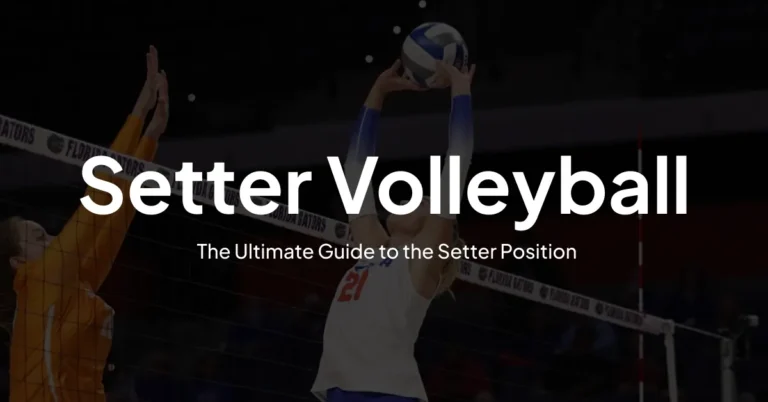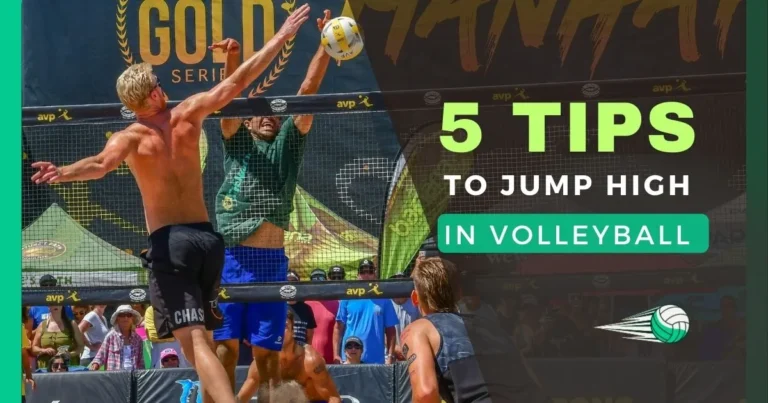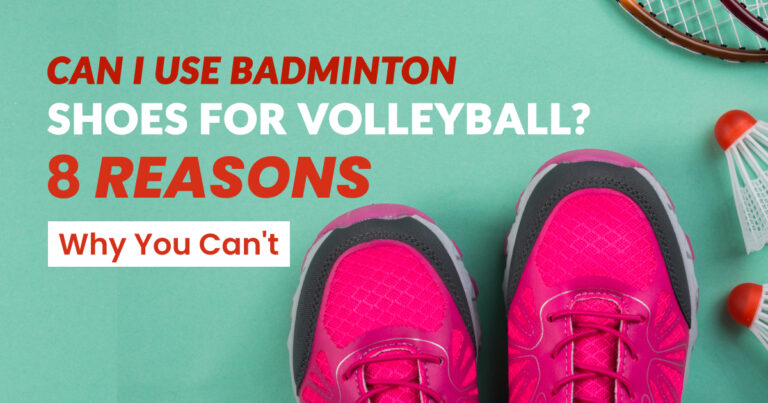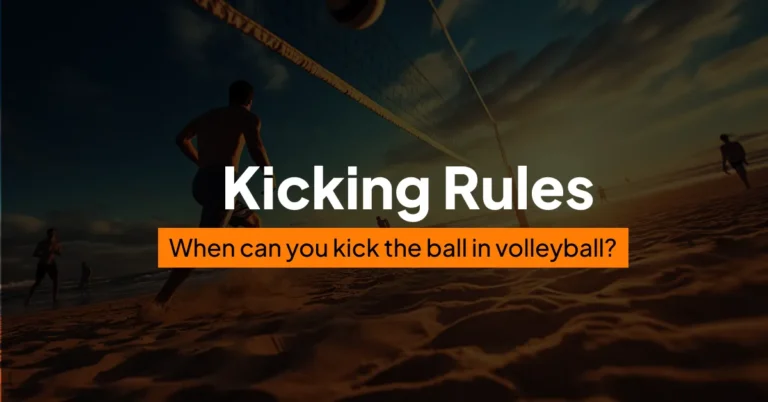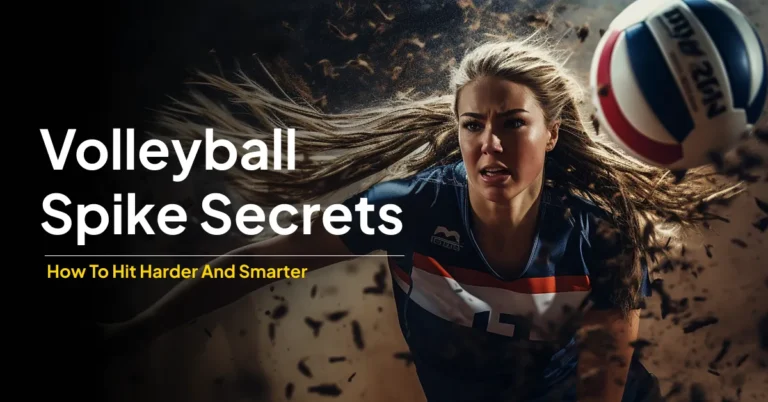6 Important Positions in Volleyball – Court Position & Rotations
Position and rotation are important in volleyball. There are overall 6 positions in volleyball. Each position in the volleyball court has its own unique set of roles & responsibilities and attributes that are essential for the volleyball team’s success.
Each player has the opportunity to play in all six positions throughout a game with clockwise rotation after each point they win.
Want to know: How to Score a Point in Volleyball Easily – Beginners Guide
This guide is all about volleyball positions. We will deeply understand what are the positions in volleyball, their roles, myths associated with different volleyball positions and Rotations. We will also uncover what is the best position in Volleyball to play.
By understanding these positioning rules, you can become a better volleyball player and help your team to win more games.
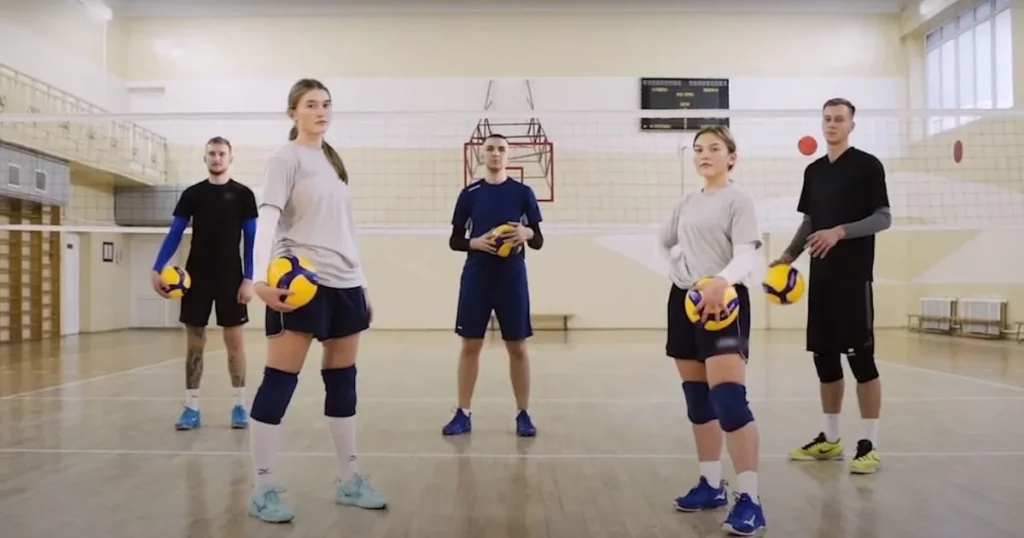
List of Volleyball Basic Positions
Here is the list of 6 important position with their dedicated names. Each position is assigned with its separate duties that we will discuss later.
- Setter
- Outside Hitter
- Middle Hitter
- Right Side Hitter
- Defensive Specialist
- Libero
Diagram Of Volleyball Court With Positions
There is no fix position in Volleyball as players rotate every time they win a point or serve. Look at the volleyball positions rotation diagram below to understand how players rotate in the volleyball court & what rules they follow.
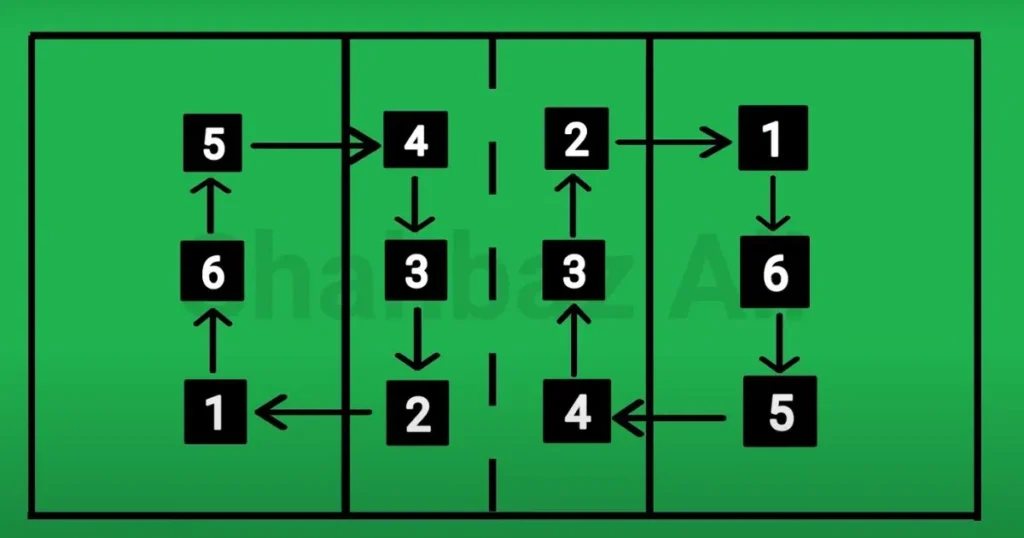
Court Position Explained
Do you know how many players are in volleyball court and how are they positioned? Well, The six players on the court are positioned in two rows:
- the front row
- the back row
The front row consists of the three main hitters such as outside hitter, middle hitter, right side hitter and the setter.
Whereas the back row consists of the defensive specialist and the libero.
Do you know: What is universal position in volleyball? We will find out in this guide
Position Rotations
Players rotate positions on the court after each point is scored. This rotation ensures that each player gets to play in all of the positions on the court.
Let’s say that your team is serving and you are in the right front position. You serve the ball and your team wins the point. After the point, you will rotate to the right back position.
On the next serve, you will be responsible for passing the ball to your setter. If your team wins the next point, you will rotate to the middle back position.
In the middle back position, you will be responsible for digging the ball and setting up attacks for your front-row teammates.
Each time your responsibilities get changed so it become necessary for you to learn all the positions on the volleyball court
What are the 6 different positions in volleyball? Roles, Responsibilities & Attributes
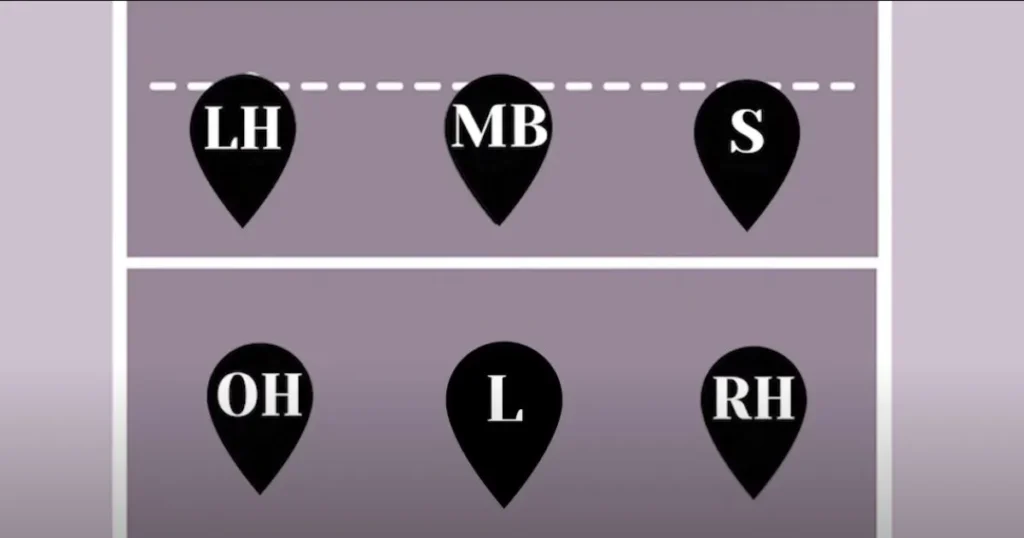
What Volleyball Position Should I Play is a common question. Learning Six Volleyball Court Positions is important. Lets analyze each position with their roles in detail so you can find out what position suits you.
Setter (S)
The setter position is the quarterback of the volleyball team. He is responsible for setting up the ball to the hitters for spikes. Setters need to have good court vision, passing skills, and most importantly communication skills.
They act like a captain in the court and decide what will happen in the playing area. A great setter tries to find the weak spots in the other team’s defense and tell the hitters how to attack those spots.
Setters do communicate with their team in sign language.
Outside Hitter (OH)
The outside hitters, often called left side attackers, are the primary attackers on the team. They are responsible for spiking the ball over the net from the left side of the court and scoring points. Outside hitters have good jumping ability (having highest vertical jump), heavy hitting power, and speed.
Want to Know: How to Jump Higher in Volleyball – 5 Secret Tips & Exercises
OH passes the ball well in serve reception so that the team can set up their offense.
Middle Hitter (MH)
The middle hitters are the tallest players on the team. They are responsible for blocking the other team’s spikes and hitting the ball over the net for points from the middle of the court. Middle hitters need to have good jumping ability, blocking skills, and hitting power.
Middle hitters are very important players, both offensively and defensively. They need to be able to hit the ball from a variety of different sets. Middle hitters typically rotate to the back row, but they are often replaced by the libero. This is because middle hitters are so important defensively, and the team needs them to be in position to block.
Opposite Hitter (OH)
Opposite hitters are the opposite to the left side hitter, who is the team’s main hitter. They are considered as “Universal Players” in Volleyball because they typically play in the back-row and front-row positions on the right side of the court.
In a 6-1 rotation, opposite hitters can play all the way around, passing, defending, and hitting from the back row. Their responsibilities include hitting from the front and back row by playing right-back defense, and blocking the other team’s outside hitter.
Unlike other positions in volleyball, the universal player does not rotate to the front-row setter position but instead remains in the right-side hitting position throughout the game.
Defensive Specialist (DS)
The defensive specialist is responsible for digging spikes, passing serves, and covering the back row. Defensive specialists need to have good reflexes, anticipation, and ball-handling skills.
Libero (L)
The libero is a defensive specialist who is only allowed to play in the back row. Liberos wear a different colored jersey than the rest of the team so that they are easily identifiable to the referees and spectators. Liberos need to have excellent digging and passing skills.
The Rare 7th Position: Serving Specialist
Some teams may use a serving specialist, who is a player who is only brought in to serve the ball. Serving specialists typically have a very strong serve and are able to place the ball in difficult locations for the other team to receive.
Volleyball Positions & their Abbreviations
| Sr# | Volleyball Positions | Abbreviation |
| 1 | Setter | S |
| 2 | Middle Blocker | MB |
| 3 | Opposite Hitter | OPH |
| 4 | Outside Hitter | OH |
| 5 | Libero | L |
| 6 | Defense Specialist | DS |
| 7 | Serving Specialist | SS |
How Positions Rotate in Volleyball – Learn all about player positions
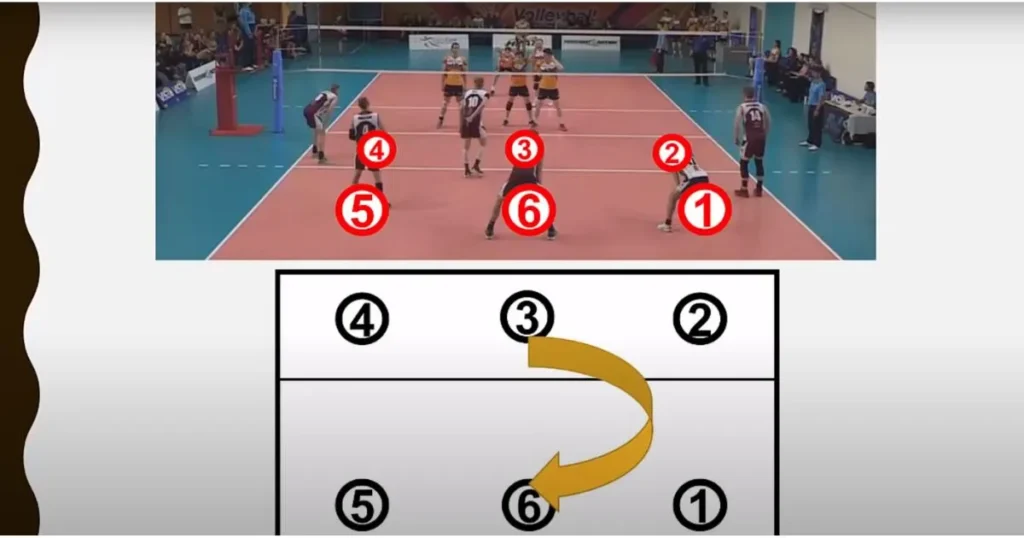
Players rotate positions on the court after each point is scored. This rotation ensures that each player gets to play in all of the positions on the court.
Here is an example of a position rotation in volleyball:
Rotation 1:
- S – Position 4
- OH – Position 2
- MH – Position 3
- RS – Position 1
- DS – Position 5
- L – Position 6
Rotation 2:
- S – Position 2
- OH – Position 3
- MH – Position 1
- RS – Position 6
- DS – Position 4
- L – Position 5
Rotation 3:
- S – Position 3
- OH – Position 1
- MH – Position 6
- RS – Position 4
- DS – Position 2
- L – Position 5
Players continue to rotate in this way throughout the game.
Here is an example of a position rotation in volleyball:
| Positions | Rotation 1 | Rotation 2 | Rotation 3 |
| Setter | 4 | 2 | 3 |
| Outside Hitter | 2 | 3 | 1 |
| Middle Hitter | 3 | 1 | 6 |
| Right Side Hitter | 1 | 6 | 4 |
| Defensive Speacialist | 5 | 4 | 2 |
| Libero | 6 | 5 | 5 |
FAQs
What is P1 and P2 in volleyball?
P1 and P2 are the positions of the two middle hitters in the front row.
What is L1 and L2 in volleyball?
L1 and L2 are the positions of the two liberos on the court.
What is the position RS in volleyball?
RS stands for the right side. It is the position of the right-handed hitter in the front row.
What does 51 mean in volleyball?
51 is a rotation in which the two middle hitters are switched.
What is position 2 in volleyball?
Position 2 is the position of the setter in the back row.
Final Words
In a nutshell, all 6 positions in volleyball are important for the team’s overall success. Each position has its own unique set of responsibilities and attributes that are essential for winning games. By understanding the roles and responsibilities of each position, players can work together to create a successful team.

